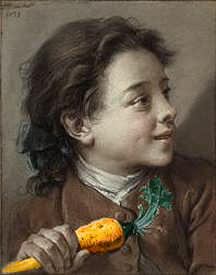5.06.2008
In a recent post, David Warlick points out an interesting report called Ready to Innovate(.pdf) from The Conference Board and Americans for the Arts, in partnership with the American Association of School Administrators (AASA). This is where it begins:
U.S. employers rate creativity/innovation among the top five skills that will increase in importance over the next five years, and stimulating innovation/creativity and enabling entrepreneurship is among the top 10 challenges of U.S. CEOs.
Great- this is what arts educators have been saying for years now, and its nice to see further examples of that idea reflected in the the larger education and business worlds. However, the report also finds that the actions of companies and school districts doesn't quite match their claimed advocacy in a number of important ways. First of all there is far less requirement of creative activities in both schools and the workforce than offerings. The second point, which raises important questions, is that there is little consensus on what constitutes creativity and creative activity (23% of employers judge prospective employees' creativity on their appearance - remind me to wear that batik tie I made in the 11th grade for my next job interview).
It would seem that the message has been received - that the arts, along with right-brain directed activities need to play a more central part in our curriculums. Now the challenge is equating idea with action.
2 Comments:
Subscribe to:
Post Comments (Atom)















However, I think that the arts have to reach out as well, that art is not just about galleries, that it is about creative (I like "inventive") expression. It's about communication. I think that it isn't just the broader curriculum seeing the importance of the arts, but the arts must also learn and even invent its connection to the rest of the curriculum. It's a golden opportunity that could get squandered.
Of course, many/most creative arts educators understand this. But it also has to become part of their image, part of what the rest of us understand about arts education -- that its as much about our economy as it is about pictures, music, drama, and dance. There's a pitch to be made...
Thanks for continuing the conversation.
Thanks for the comment. I completely agree about the arts reaching out - it is about communication- in fact, I'm happy to be a small part of the great ning community that Craig Roland created for art teachers on Ning- Art Ed 2.0. We have been working on projects that are global in participation and recognition, like our Artist Trading Card project and Rotoball Animation project. The visual nature of the web (and specifically the 2.0 part) provides an amazing opportunity to create a larger audience for our students' work than just a school art show.
One point though - I think that the idea of "art connecting to the rest of the curriculum" is a slippery slope. Howard Gardner and Daniel Pink have both been some of the advocates who have recently pointed out that a 'right-brained' artistic approach is needed in all areas of the school curriculum, and I fully agree. However, that doesn't mean that the learning in the art classroom should be connected to the learning in other disciplines- in too many cases, it becomes a situation in which art becomes a medium to teach another concept. In this case, we run the risk of students conceptualizing art as playing a subservient role of communication, and not an important form of self expression.
I'm not sure if that's the direction you were suggesting or not, but I think its worth mentioning the difference.